Let’s Stop Calling It Labor: We’re All In The Services Business Now.
The job market is more dynamic than ever, and I think we can stop using the word “labor” to talk about what’s going on. Let me explain.
Government organizations like the Department of Labor, Bureau of Labor Statistics, and even labor unions are named around the concept of people as workers. In the industrial age companies had “management and labor,” and we considered workers as individual laborers with a fixed set of skills for a specific job.
Well, all that has changed. We now live in an economy of tech-enabled service jobs (more below) and the “labor market” is a dynamic, ever-changing system. In fact, the transformation of jobs from “routine” to “service” is happening so fast, roughly one in four Americans changed jobs in the last year. (And more than 25% expect to change careers!)
The latest BLS report shows that the US workforce will grow by almost 11 million jobs over the next nine years, and the biggest trend is toward more service work, hybrid work, and an expanding age range for work.
Let’s look at the numbers. I’ve been studying the BLS data for over 20 years and there is a massive trend away from manufacturing and routine work toward jobs in healthcare, education, professional services, leisure, and hospitality. These jobs, which some consider “essential,” are what we could call “technology-enabled services.” And every company, regardless of what you do, is feeling more like a professional services company every day.
What is a “service job?” It’s not necessarily a job in the consulting industry: it’s a job where your human skills (listening, communicating, helping, organizing, managing) are essential to the work. And this is just about every high-wage job in the country. The BLS and other statistics tend to group jobs into “service industries,” but they’re really missing the point. Every job, regardless of industry, is now becoming a service job.
Economists, consulting firms, and data companies have now proven this fact. McKinsey, the World Economic Forum, and our work with EMSI and Eightfold.ai show that roughly 90% of the jobs (by number) are no longer routine. Yes, they may require operational skills (a mechanic, repair person, or oil service worker needs lots of technical skills), but it’s human judgment that adds value.
And many of the “Future of Work” studies (there are hundreds of them) show that automation is not eliminating the more routine jobs, it is making them more “human” and actually increasing their value. So while you may think robots are taking jobs away, they’re really doing us all a big favor. Yes, you have to educate yourself and keep up to date to maintain your value, but learning is just a part of having a career.
(Sometimes I think companies like McKinsey like to scare their clients about the impact of automation, writing articles like “millions of people have to change careers or upgrade your skills.”) This has been going on for decades.
Today, despite the fact that there are 8.4 million people unemployed, the workforce is transforming faster than I have ever seen. Every CHRO and business leader I talk with is creating new training programs, building capability academies, and developing new skills models to figure out how to hire, train, and move people into new roles. In fact, I think the new role of “skills and job architect” is one of the hottest jobs in business!
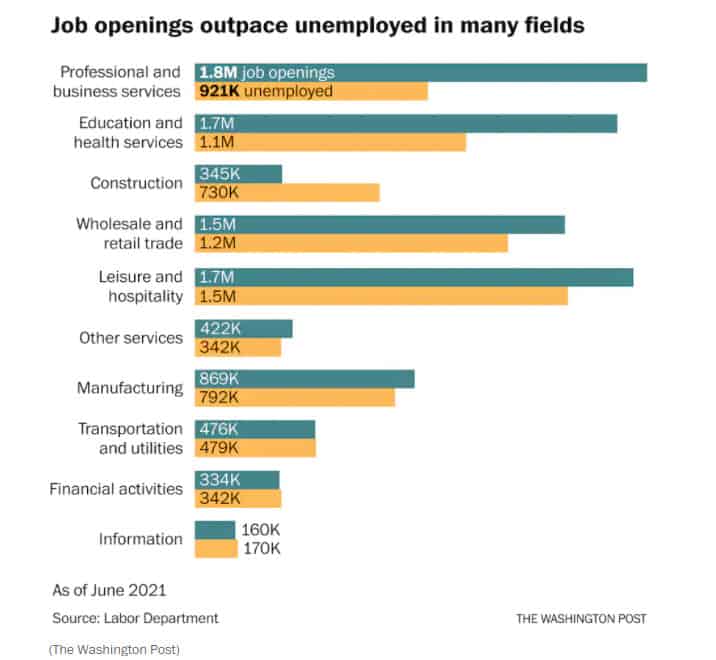 |
Let me cite some examples.
We have three large clients who are telecommunications companies. Each is grappling with the massive disruption of 5G, digital content businesses, and the need to add creativity and “the creator economy” to their companies. How are they doing this? One of them has created a whole new set of “architect” jobs to help design and consult with customers about 5G business models. Telcos are among the most adaptable companies in the world, and they help people reinvent themselves every day.
Another of our clients is a well-known software company that leads the market for architectural, engineering, and manufacturing software. They see their industry consolidating into an integrated suite of tools, with horizontal business models crossing the traditional industry groups. To deal with this they are pushing every employee to learn about the adjacent technologies in their industry, and they’re reorganizing the software teams into more integrated groups. What is this? It’s a new “service offering” they want to provide, so they’re teaching employees how to crawl up the value curve.
I just talked with an HR executive for Allstate, one of the oldest and most successful insurance companies in the world. Every part of their business is being automated (claims agents have been replaced by iPhones and AI analyzing photos). Are they laying people off? Not at all – they’ve been training their teams for more than 90 years, and they encourage workers to try new positions and learn new skills as often as they’d like.
Think about healthcare workers and teachers. Are they “labor?” Of course not: these are some of the most complex, human-centered jobs in the world, and they are all “tech-enabled” too.
What about software or other types of engineers? Since they do routine work, are they also just “labor?” Of course not. Design and engineering are among the most “tech-enabled service jobs” I can imagine. Software engineers, designers, and all forms of mechanical, civil, chemical, and bio-engineers are among the most creative jobs in the world.
Jobs Become More Hybrid And Better
We also know that jobs keep getting more complex over time, ultimately become more “Hybrid.” And this has been good. In the last jobs report wages went up by .6% for a whopping increase of 4.3% year over year. This shows that the trend toward “service roles” is positive, and employers are seeing more and more value in “labor” every year.
I often show people an interesting study that plots wages against inflation over time. This group of researchers looked at “highly technical jobs” vs. “non-technical jobs” and grouped the O*Net jobs into four types: pure technology and science, pure social and management, and those that combined both. As you can see, technology-only workers tend to fall behind over time – it’s the “tech-enabled services” that thrive.
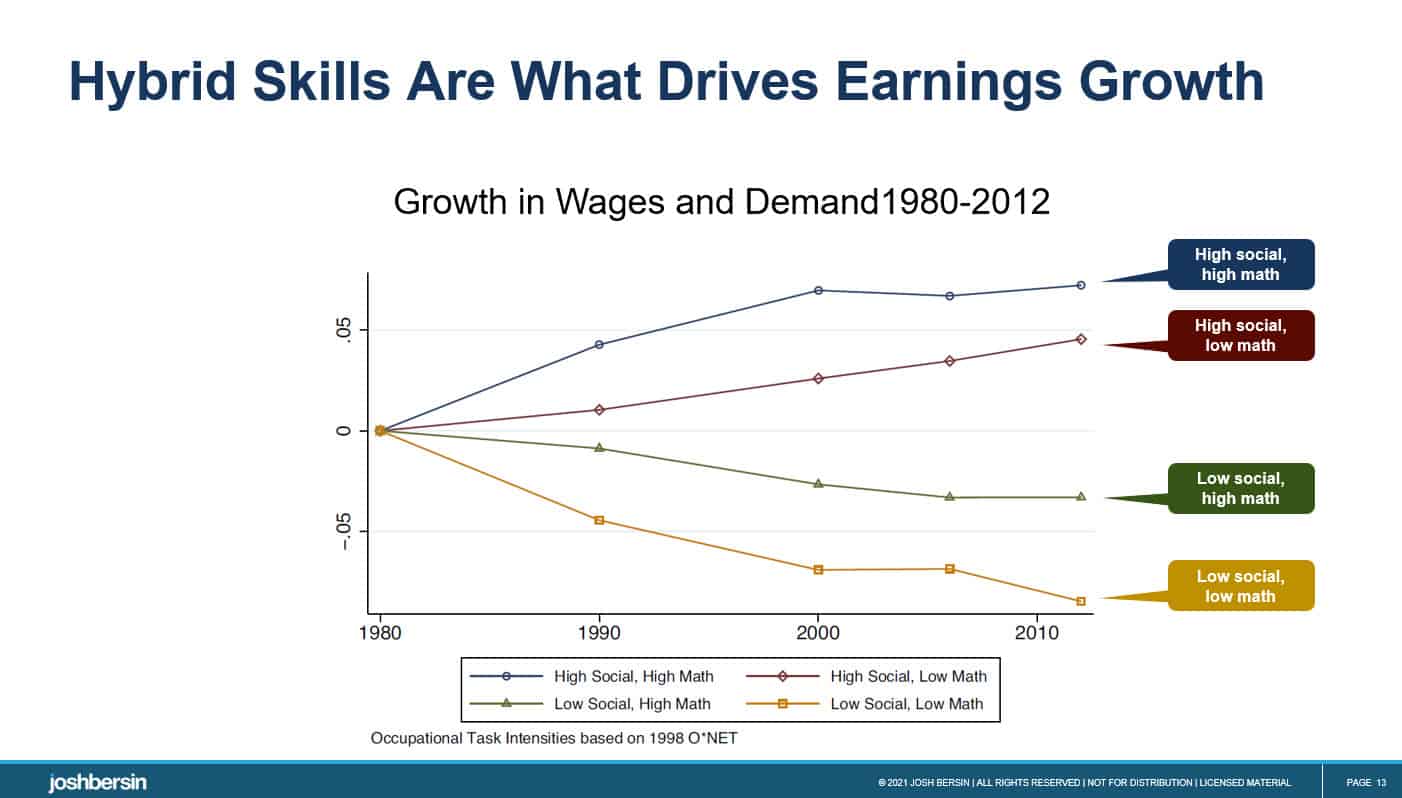 |
Young people understand this well. They don’t want more “technical skills” to succeed. This study, which was done in Australia, shows that the younger you are, the more likely you are to want more “professional and social skills” to succeed. And this makes sense. Young people learn about tech in high school: actually working with other people and understanding how business works is where the action is.
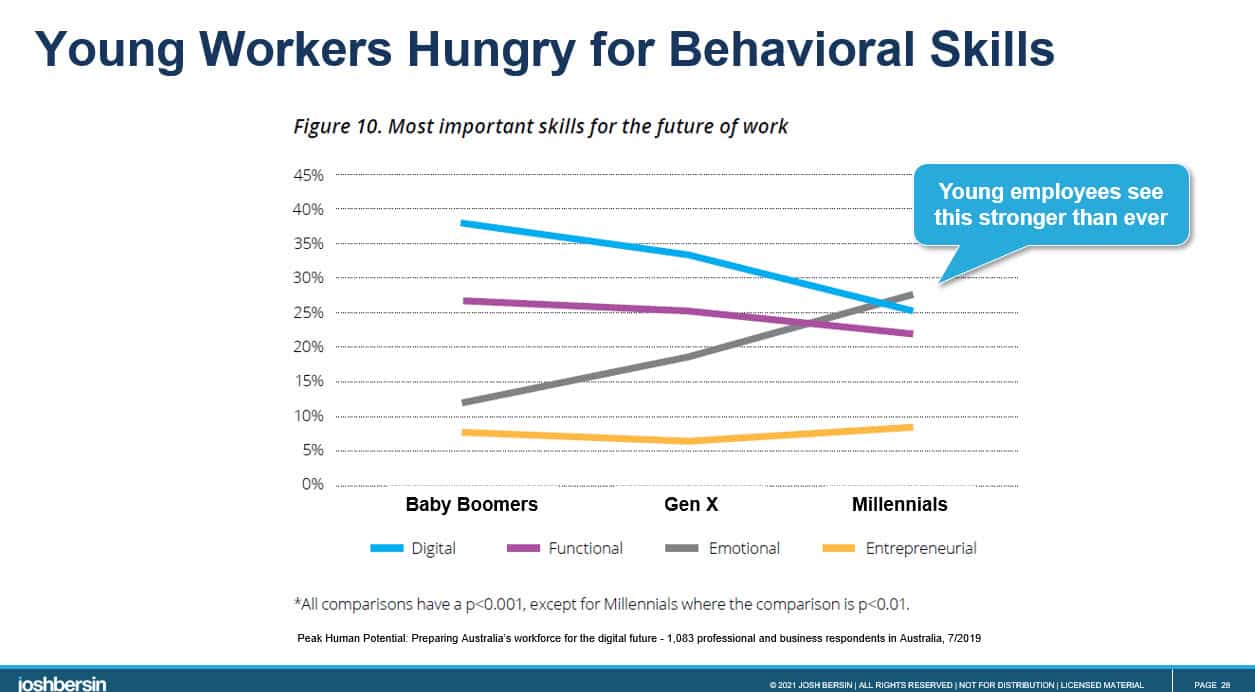 |
Implications Of This Trend
There is a myriad of studies, articles, and experts trying to redefine work and jobs. And many of them talk about “labor shortages” and “automation reducing jobs” for many people.
Let me suggest that this is limited thinking. Every job, no matter how routine it may be, becomes more “service-oriented” over time. The engineer who designs code for websites becomes more consultative and creative as his or her skills increase. The teacher who graduates from school becomes more expert and inspirational over the years. And even the hourly worker who serves meals or cares for sick patients becomes more supportive and human as their work becomes automated.
Look at the mapping that McKinsey did back in 2018. They, like many other consultants, have clearly shown that the world of work is moving “up and to the right.” Your job as a business leader, HR professional, or worker is to help make this transition happen.
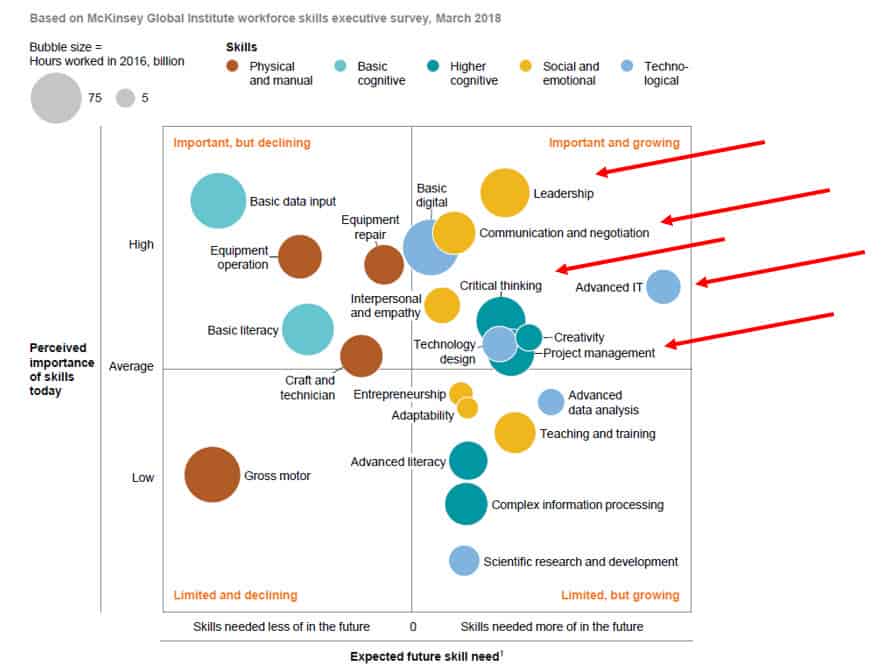 |
People Adapt Much Faster Than You Think
Every month when the jobs report comes out there seems to be a worry about “who is being left behind.” My research shows that people are adapting much faster than you may think. Consider the fact that the US unemployment rate has dropped faster than anyone ever imagined. Not how steep the “return to employment” has been during the pandemic: this is the fastest growth we have ever seen. And this is not just “job growth” – it’s new jobs coupled with people changing roles, changing careers, and moving into new positions.
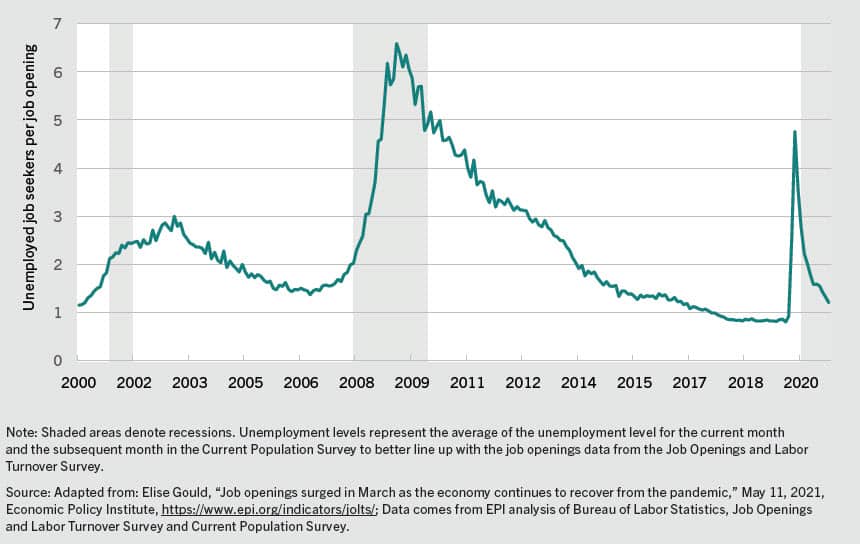 |
Historically if you look at past recessions (and yes I know this one was more of a public health crisis than a typical recession), the rebound is setting a record. And this is not because “labor” is finding a job, it’s because “people” are moving into new careers.
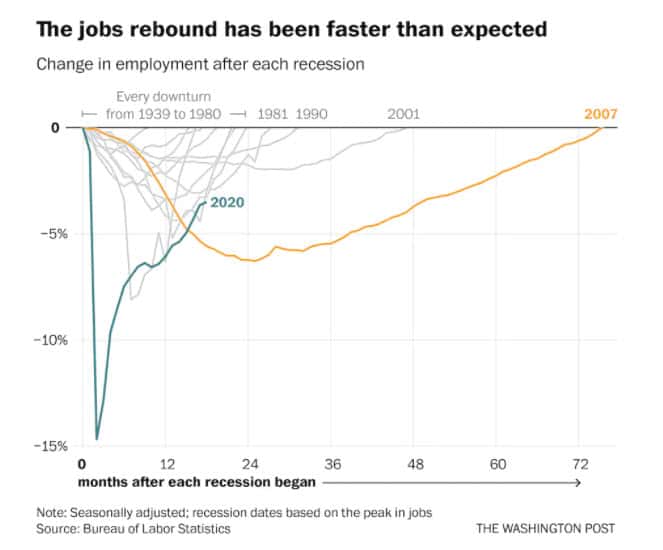 |
We’ve done many studies to prove that “developing people” is often faster and less expensive than “hiring people” as jobs change. Why? Because in a well-run company, people reinvent themselves readily. If we stop thinking about people as “replaceable parts” that we “hire,” we’ll be amazed at how adaptable our workforce can be.
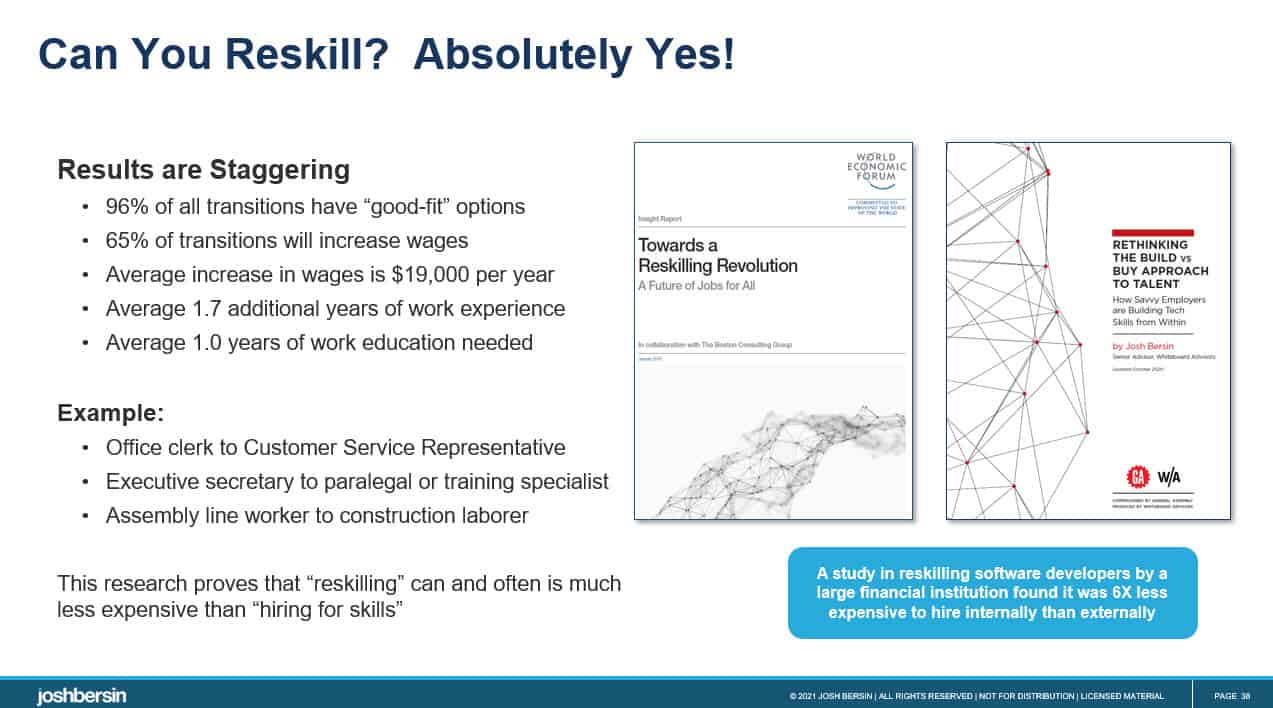 |
Let’s stop thinking about the “labor market” as a sea of workers forced to “find the next job,” and think about the workforce as an evolving, changing system. Let’s not think about automation as something that “does away with jobs” and forces us to “reskill our labor,” but rather as a way to “create opportunity for more people.”
The “labor market” is not a market for labor. It’s one of the most dynamic parts of the economy, filled with people learning and growing every day.
Additional Resources
Join our New Research on Organization Design
What To Expect In A Red Hot Job Market? Five Things To Consider
